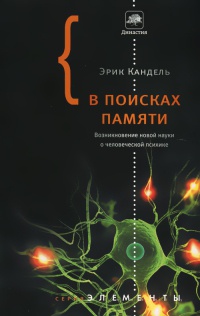Книга Психология стресса - Роберт Сапольски
Шрифт:
Интервал:
Закладка:
Сноска, касающаяся спекуляций по поводу выгод приема Helicobacter: Whitfield, J., “Gut reaction,” Nature 423 (2003): 583.
Стр. 109. Роль простагландинов в образовании язвы: защитные эффекты про- стагландинов обсуждаются в Kauffman, G., Zhang, L., Xing, L., Seaton, J., Colony, P., and Demers, L., “Central neurotensin protects the mucosa by a prostaglandin- mediated mechanism and inhibits gastric acid secretion in the rat,” in Hernandez, D., and Glavin, G., eds., Neurobiology of Stress Ulcers (New York: Annals of the New York Academy of Sciences, 1990), vol. 597, 175. См. также Schepp, W., Steffen, B., Ruoff,
H. , Schusdziarra, V., and Classen, M., “Modulation of rat gastric mucosal prostaglandin E2 release by dietary linoleic acid: effects on gastric acid secretion and stress-induced mucosal damage,” Gastroenterology 95 (1988): 18.
Аспирин способствует образованию язвы, так как он блокирует синтез простагландинов: Adcock, J., Hernandez, D., Nemeroff, C., and Prang, A., “Effect of prostaglandin synthesis inhibitors on neurotensin and sodium salicylate-induced gastric cytoprotection in rats,” Life Science 32 (1983): 2905. Глюкокортикоиды блокируют синтез простагландина: Flowers, R., and Blackwell, G., “Anti-inflammatory steroids induce biosynthesis of a phospholipase A2 inhibitor which prevents prostaglandin generation,” Nature 278 (1979): 456.
Стр. 109. Роль сокращений желудка в содействии образованию язвы подробно обсуждается в Weiner, H., “From simplicity to complexity (1950-1990): the case of peptic ulceration-II. Animal studies,” Psychosomatic Medicine 53 (1991): 491.
Стр. 109. Levenstein, S., “The very model of a modern etiology: a biopsychosocial view of peptic ulcer,” Psychosomatic Medicine 62 (2000): 176. Ее цитата в подстрочном примечании взята из Levenstein, S., “Wellness, health, Antonovsky,” Advances 10
(1994) : 26.
Глава 6. Карликовость и роль матери
Стр. 110. О механизмах роста и регуляции роста с помощью различных гормонов можно прочитать в любом учебнике по эндокринологии или физиологии. Относительно доступную версию для неспециалистов можно найти в Vander, A., Sherman, J., and Luciano, D., “Human Physiology: The Mechanisms of Body Function,” 6th ed. (New York: McGraw-Hill, 1994).
Стр. 112. В качестве введения к этой обширной теме метаболического имприн- тинга см.: Hales, C., Barker, D., “Type 2 (non-insulin-dependent) diabetes mellitus: the thrifty phenotype hypothesis,” Diabetologia 35 (1992): 595; Barker, D., Hales, C., “The thrifty phenotype hypothesis,” British Medical Bulletin 60 (2001): 5.
Стр. 113. За недостаточным питанием эмбриона следует изобильное питание после рождения: Ozanne, S., Hales, C., “Catch-up growth and obesity in male mice,” Nature 427 (2004): 411.
Стр. 114. Применение эмбрионального импринтинга к менее драматичным условиям предоставления питания: Gluckman, P., “Nutrition, glucocorticoids, birth size, and adult disease,” Endocrinology 142 (2001): 1689; Reynolds, R. M., Walker, B.
R., Syddall, H. E., Andrew, R., Wood, P. J., Whorwood, C. B., Phillips, D. I., “Altered control of cortisol secretion in adult men with low birth weight and cardiovascular risk factors,” Journal of Clinical Endocrinology and Metabolism 86 (2001): 245. Низкий вес при рождении предсказывает риск диабета и гипертонии во взрослом возрасте: Levitt, N. S., Lambert, E. V., Woods, D., Hales, C. N., Andrew, R., Seckl, J. R., “Impaired glucose tolerance and elevated blood pressure in low birth weight, nonobese, young South African adults: early programming of cortisol axis,” Journal of Clinical Endocrinology and Metabolism 85 (2000): 4611.
Стр. 115. Величина этих эффектов импринтинга: Hales and Barker, “Type 2 (noninsulin dependent) diabetes,” Diabetologia, op. cit.; Leon, D., Lithell, H., Vagero, D., Loupilova, L., Mohsen, R., Berglund, L., Lithell, U., McKeigue, P., “Reduced fetal growth rate and increased risk of death from ischaemic heart disease: cohort study of 15,000 Swedish men and women born 1915-29,” British Medical Journal 317 (1998): 241.
Сноска. Ravelli, A. J., van der Meulen, J., “Absence of an imprinting effect of fetuses from the Siege of Leningrad,” The Lancet 351 (1998): 173.
Стр. 115. Эмбриональное программирование уровней глюкокортикоидов у взрослых: Lesage, J., Dufourmy, L., Laborie, C., Bernet, F., Blondeau, B., Avril, I., Breant,
B. , Dupouy, J., “Perinatal malnutrition programs sympathoadrenal and HPA axis responsiveness to restraint stress in adult male rats,” Journal of Neuroendocrinology 14 (2002): 135; Huizink, A., Mulder, E., Buitelaar, J., “Prenatal stress and risk for psychopathology: specific effects or induction of general susceptibility?” Psychological Bulletin 130 (2002): 115; Welberg, L., Seckl, J., “Prenatal stress, glucocorticoids, and the programming of the brain,” Journal of Neuroendocrinology 13 (2001): 113. Этот эффект поддерживается выделением глюкокортикоидов у матерей: Matthews, S., “Antenatal glucocorticoids and programming of the developing CNS,” Pediatric Research 47 (2000): 291; Uno, H., Lohmiller, L., Thieme, C., Kemnitz, J., Engle, M., Roecker,
E. , Farrell, P., “Brain damage induced by prenatal exposure to dexamethasone in fetal rhesus macaques; I. Hippocampus,” Developmental Brain Research 53 (1990): 157.
Стр. 115. Пренатальное программирование уровней глюкокортикоидов у взрослых людей: Clark, P., “Programming of the HPAaxis and the fetal origins of adult disease hypothesis,” European Journal of Pediatrics 157 (1998): S7. Оно ухудшается при преждевременном рождении: Kajantie, E., Phillips, D., Andersson, S., Barker,
D. , Dunkel, L., Forsen, T., Osmond, C., Tuominen, J., Wood, P., Eriksson, J., “Size at birth, gestational age and cortisol secretion in adult life: foetal programming of both hyper- and hypocortisolism?” Clinical Endocrinology 57 (2002): 635.
Стр. 115. Эмбриональное программирование риска метаболического синдрома: Dodic, M., Peers, A., Coghlan, J., Wintour, M., “Can excess glucocorticoid, in utero, predispose to cardiovascular and metabolic disease in middle age?” Trends in Endocrinology and Metabolism 10 (1999): 86; Dodic, M., Moritz, K., Koukoulas, I., Wintour, E., “Programmed hypertension: kidney, brain or both?” Trends in Endocrinology and Metabolism 13 (2002): 405; Welberg and Seckl, “Prenatal stress, glucocorticoids, and the programming of the brain,” Journal of Neuroendocrinology, op. cit.
Стр. 116. Эмбриональное программирование репродуктивной способности взрослых: Charmandari, E., Kino, T., Souvatzoglou, E., Chrousos, G., “Pediatric stress: hormonal mediators and human development,” Hormone Research 59 (2003): 161; Huizink et al., “Prenatal stress and risk,” Psychological Bulletin, op. cit.
Стр. 116. Эмбриональное программирование состояния тревожности во взрослом возрасте: Matthews, op. cit.; Welberg and Seckl, op. cit., Huizink et al., op. cit. Больше способствующего тревоге нейротрансмиттера, меньше рецепторов антитревоги: Avishai-Eliner, S., Brunson, K., Sandman, C., Baram, T., “Stress-out, or in (utero),” Trends in Neuroscience 25 (2002): 518; Teicher, M., Andersen, S., Plcari, A., Anderson, C., Navalta, C., Kim, D., “The neurobiological consequences of early stress and childhood maltreatment,” Neuroscience and Biobehavioral Reviews 27 (2003): 33.

























